How Visually attractive product photos positively impact ecommerce sales?
Shivam Shekhawat
Online purchases are made by 21.8 percent of the world's population or 1.66 billion individuals. However, convincing such a large number of potential consumers is difficult, and as more people enter the pool, more internet businesses arise every day, resulting in a fiercely competitive industry.
You need to stand out in whatever business you're in, whether it's fashion, technology, traditional products, B to C services, or something else different. Product photography is one of the many strategies available that has a big impact on purchasing decisions.
When it comes to convincing clients to buy anything, the product photography is crucial.
Photo quality is the most crucial component in an online sale, according to 90% of online customers. According to Justuno, 93 percent of consumers regard visual content to be the most important component in determining whether or not to buy something. It's critical that the graphics you use to show how your products look are of high quality.
Etsy is an e-commerce site that sells "handmade or vintage items and craft materials." With a catalog of over 60 million items, (Wikipedia) discovered that image quality was the most essential aspect in an online transaction for 90% of its users!
78 percent of internet customers want photos to help them visualize things.
If you're running an e-commerce website, photo quality is obviously important, but it's not enough on its own. People nowadays, particularly the X, Y, and Z generations, want EXPERIENCES when they shop online, which is why your packshots should mirror your brand image and tell a story.
According to research done by Big Commerce, 78 percent of online buyers want images to bring things to life, allowing them to perceive the object as if it were a part of their daily lives. Product photography has the ability to tell a story about a brand: what it stands for, what it means to customers, and why the visitor should care.
Editing photographs professionally to offer your consumers knowledge of the items and give them significant expertise.
Some important points and best techniques success of eCommerce catalog
Place the photo in the center of the room.
You must make extra efforts to ensure your product images the same size and proportions, no matter how strictly you used the grid function on your phone or camera. In your eCommerce catalogues, having comparable margins and even space between product edges and edges of images is crucial.
Smart Guides or a grid can be used in Photoshop and Lightroom. Product picture editors and photo editing service providers all around the world use Photoshop to create a template of standards to standardise space across photographs.
Maintain a white background at all times.
White backgrounds have become the industry standard, with 76 percent of photographs in eCommerce product catalogs having a white background. To make your product photographs consistent with the benchmark set by markets like eBay and Amazon, use white backgrounds to prevent color spillage, reduce file size, and eliminate shadows and other distractions.
The Pen tool in Adobe Photoshop is commonly used to remove backgrounds. Photoshop's "Select and Mask" tool is another quick selection tool used by image editors. "Clipping Magic" is an internet tool that serves as a less expensive alternative for product image clipping.
Adjust the lighting to your liking.
Maintain consistency in lighting for all of your product photographs to follow catalog management best practices. Your clients expect your products to have a consistent appearance so that they can compare them side by side.
Leading photo editors use the Lighting Effects filter to create lighting effects on RGB photographs. It's also a good idea to use texture from bump maps or grayscale files to create 3D-like effects. You can save the style you created and apply it to other photographs.
Do not over-adjust the colors.
Professional picture editing companies understand that raising contrast brightens the lighter sections of your product shot while decreasing contrast darkens it. By increasing the exposure, the entire image will get brighter. Adjust the clarity and sharpness of your product photo to make visual details pop.
Color correcting features in any editing software, whether it's Photoshop or Lightroom, should be straightforward to find. Use the Curves tool in Photoshop to alter and match the hue of your products to how they seem in real life. Instead of "color enhancement," use "color correction."
For a more realistic effect, use a drop shadow.
Reflection shadows and drop shadows are commonly utilized to give your products the desired depth and "grounding," as well as to assist customers see them as 3D objects.
When editing product images for catalog management, determining the direction, distance, and quantity of light sources with the use of the form shadow function to show how a realistic cast shadow would appear, albeit microscopic, is crucial.
Understand how shadows operate before you start making your own in Photoshop. When cast shadows move ahead of the product, they tend to become lighter and blurrier. Then use a combination of Drop Shadow Layer Style, transform tools, the gradient tool, blurs, layer masks, and alpha channels to achieve your desired result.
Maintain uniformity throughout multiple photos.
For a better user experience on your eCommerce site, keep your images consistent. For uniformity of size, look, feel, format, and page loading for your online product catalog, adjust color, contrast, exposure, warmth, white balance, and so on.
Repeating the same repairs and modifications for another batch of photographs, on the other hand, might be time-consuming, risky, and result in inconsistent results.
Photoshop keeps track of the actions you take to alter your product photographs and uses them to edit other images. Batch editing in Lightroom is a breeze, as is repeating adjustments for other images you feed it. Batch processing speeds up the product image editing process significantly.
Resize the image optimized to web dimensions.
When it comes to submitting product photographs to an eCommerce store's product catalog, both image quality and size are important. You can post photos between 500 and 700 pixels on most product listing pages. One of the product catalog best practices is to never manually resize your photographs.
Low-resolution product photos appear fuzzy. Images with a resolution of 1200 pixels are strongly suggested because they become quite large when zoomed in. Instead of resizing actual photographs, catalog management system providers employ Photoshop to create a blank canvas of the image size, allowing you to drag and drop images into the marketplace.
Make use of a variety of photo editing software.
Adobe's Photoshop and Lightroom are used by the majority of product photo editing companies. These are the most user-friendly and feature-rich photo editing programs available.
There is various photo editing software to pick from:
- GIMP is free open-source software with a lot of advanced capabilities that makes it a little difficult to use.
- Pixelmator is a free alternative to Photoshop and GIMP that comes with all of the essential functions for editing product photographs.
- Pixlr is another open-source, user-friendly program that offers many of the same complex features as Photoshop.
- Try out a few different photo editing programs before settling on the one that best suits your needs. Examine your skillset as well as your patience levels.
Conclusion
Poor-quality product photos are bound to have a detrimental influence on your brand image. Product photographs of high-quality increase interaction, enhance brand credibility and improve conversion rates. While photo editing for eCommerce catalog management might be time-consuming, hiring talented photo editor services is neither difficult nor expensive.

 Let’s get started
Let’s get started



 info@triyock.com
info@triyock.com